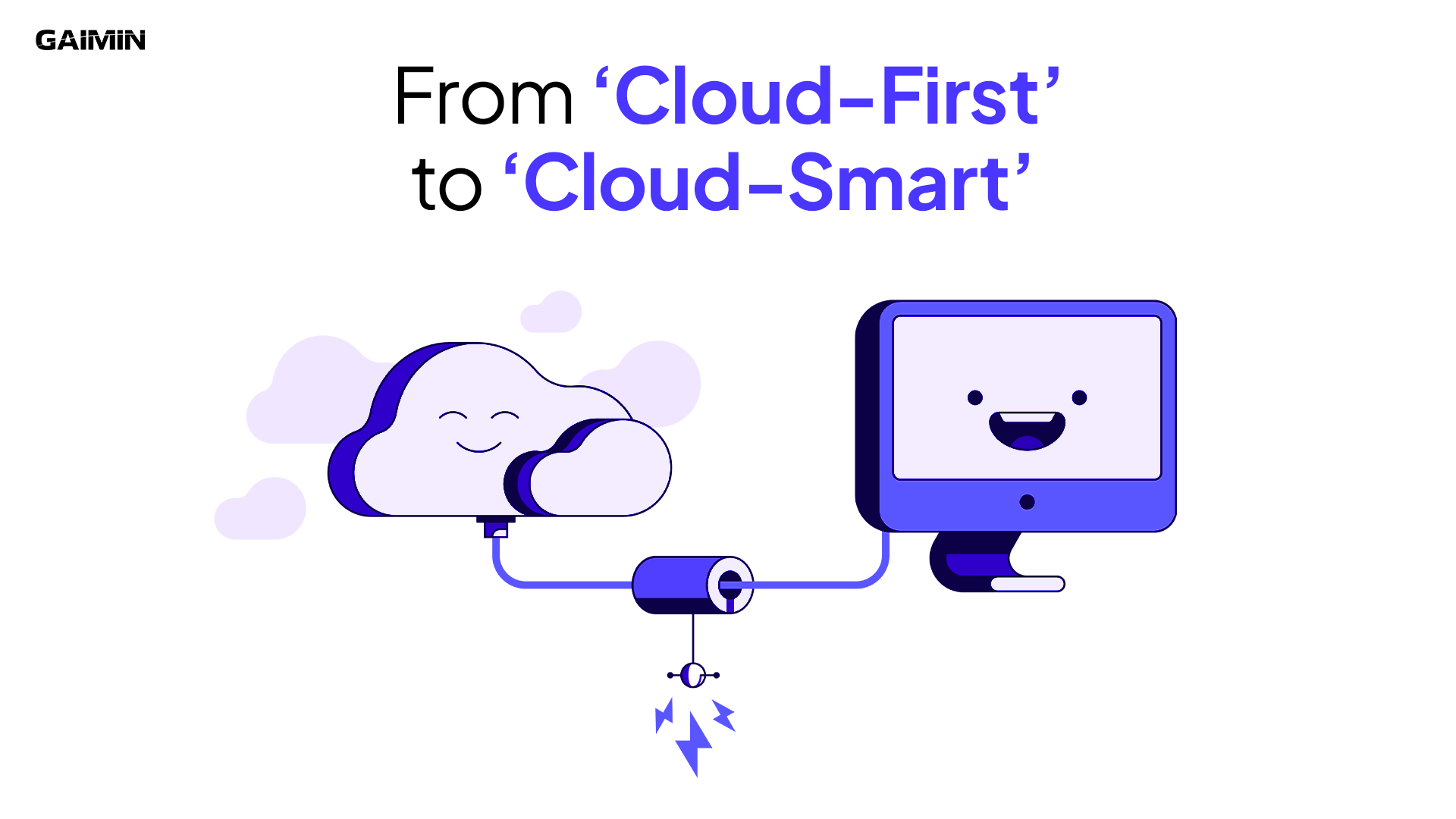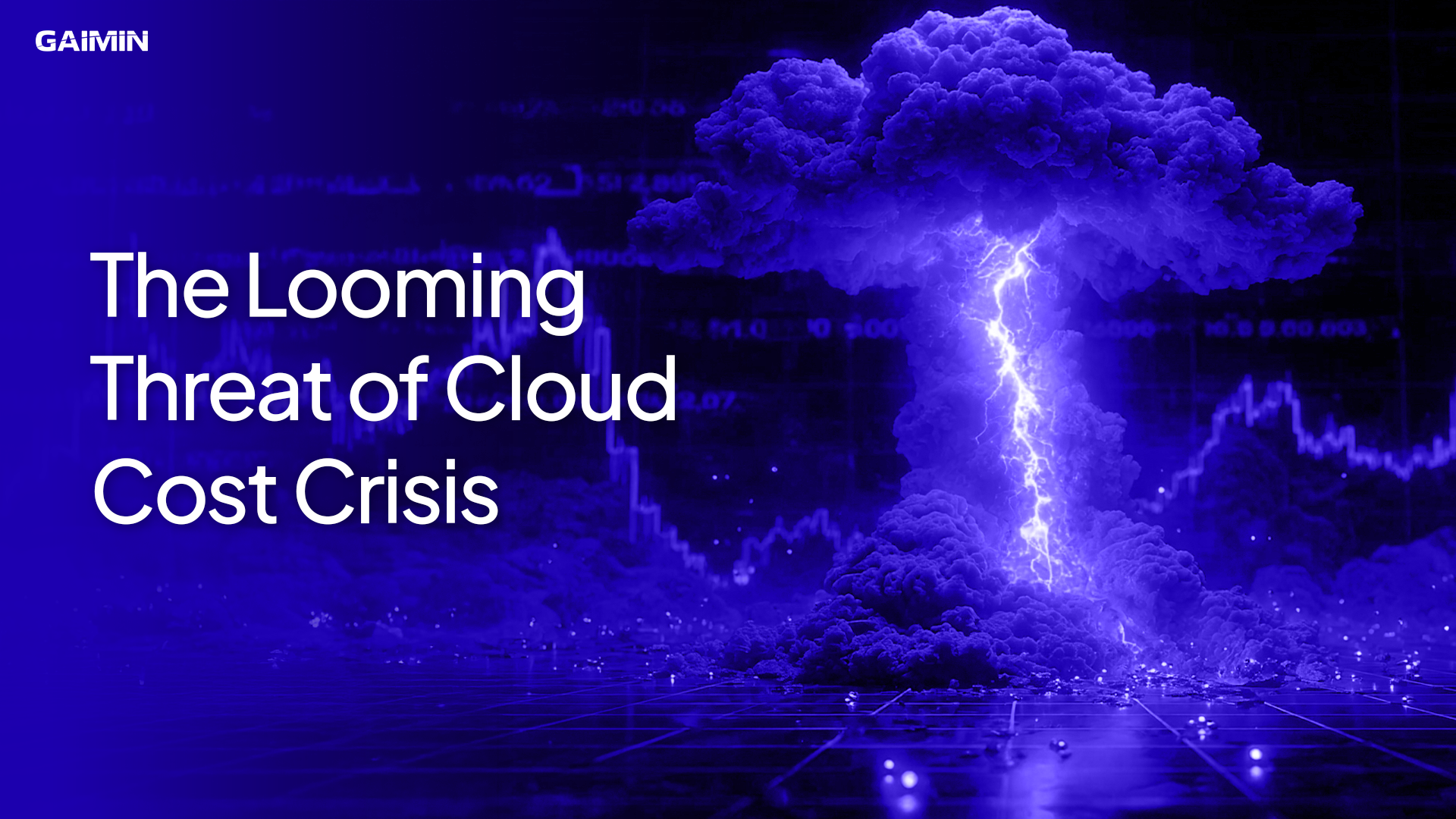When Cyberpunk 2077 pushed out its massive 1.5 patch (~50 GB) in late 2022, many players reported multi-hour download times due to server congestion. What few realized was that CDN bandwidth costs for that single update could likely be in the region of millions of dollars. Now, CD Projekt Red, the developing studio of Cyberpunk 2077, is by no means a small company and can handle the costs that come with distributing a game like Cyberpunk 2077. But scenarios like this give you a glimpse of what it might take to distribute high-quality titles, and can have you thinking, “how does the average game developer/studio match up with that?”.
The reality is that, in an industry where game assets and updates now routinely exceed 100 GB with such high costs of distribution via traditional channels, options are bound to arise and are a necessity for any developer who still wants to stay ahead in the game.
The solution may have come from an unlikely source: the gaming PCs themselves, but GAIMIN Cloud’s decentralized file-sharing model proposes not just an alternative source for infrastructure, but also a framework for a ‘self-healing’, reliable yet cost-effective file distribution network. A network built on gaming to power gaming and several other industries with the need for this file-sharing solution..
The Bandwidth Bottleneck
In order to value the solution, we must first understand the problem. Speak to any game developer you know, and you’d get a sense that modern game distribution operates on a brutal economic model. Here are some lesser-known facts about the game:
- AAA game development costs are now comfortably sitting in the regions of several hundred million dollars, with a huge chunk of studios’ total budget on bandwidth alone.
- CDN costs have been rising for a while now in an attempt to balance the demand with the available supply of delivery services.
- And this is not only proving costly for the big studios developing AAA games, but indie developers cite distribution fees as their #1 profitability barrier, which alone slashes over 30% of revenue.
The numbers get worse when you examine patch culture. Destiny 2’s 2023 "Lightfall" expansion required a 92GB re-download of existing assets just to reorganize files. Under traditional CDN pricing, using the AWS CloudFront pricing of around $0.085 per GB for North America as a reference, that one update cost Bungie approximately $4.6 million in pure delivery fees!
That’s how critical the subject at hand has become for the average game developer or aspiring AAA studio out there.
GAIMIN Cloud’s “Radical” Value Proposition
What makes GAIMIN Cloud so radical isn’t just the cost-effective factor; rather, it’s the business model entirely. Instead of renting space on expensive, centralized server farms, which are the very reason the cost of cloud services is understandably increasing exponentially, GAIMIN taps into what already exists: the idle storage of PCs (mostly gaming ones) around the world and their bandwidth to stay online to contriobute that storage resource to a network. This isn’t theoretical; it’s active, tested, and trusted.
And the best part? It’s a win-win. It’s a scalable infrastructure built by gamers, for games. Gamers earn for contributing their resources. Developers slash distribution costs by tapping into a decentralized delivery mesh that scales on demand and routes files intelligently based on proximity and availability. This cost savings gets reinvested into other areas of game development, which enables the developers to build more quality games for the gamers, who also get this in addition to a share of the revenue for contributing to the decentralized infrastructure.
No more outrageous bandwidth bills. No more depending on a handful of overloaded data centers. With GAIMIN Cloud, distribution becomes distributed, smart, cost-effective, and powered by the very community it serves.
Real-World Figures That Make the Case for GAIMIN Cloud
Traditional CDNs charge game developers an average of $0.09 to $0.12 per GB delivered. At scale, this becomes a massive financial burden, especially for games pushing 100+ GB files.
Let’s run some math, based on a scenario where a 100 GB patch is delivered to 1 million players via a conventional CDN:
- 100 GB × 1,000,000 users = 100 million GB (or 100 petabytes) delivered
- At $0.09/GB, this distribution will cost $9 million.
- And if it’s a service with a higher cost, say $0.12/GB, that’s $12 million throughout, getting 1 million downloads on that 100 GB file.
Now let’s say this file was distributed via GAIMIN Cloud’s file sharing service, at $0.03–$0.04/GB:
- That same update would cost around $3 million, which is around a whopping 60% cost savings!
That’s a savings of $6–$9 million per major patch, a cost delta that could fund entire game modes, community expansions, or additional platform ports.
And the benefits don’t just stop at price:
- Geo-distributed delivery from gamer nodes means lower latency and faster delivery.
- No vendor lock-in like in the case of traditional centralized solutions.
- On-demand scaling with no need to provision extra servers.
- A network that self-upgrades to the latest technology as gamers and PC users adopt better hardware.
GAIMIN’s model not only reduces file delivery costs dramatically, but it also turns distribution into a growth engine. Game developers and studios can access more developer-friendly infrastructure at cheaper costs, while the focus their cost savings and efforts towards other needful parts of their game development.
And for studios fighting thin margins or expanding globally, that delta could be the difference between profit and failure.
Revolutionizing File Distribution in a Gamer-first World
As game sizes grow and community-driven content explodes, the cost of delivering digital experiences will keep going up and quietly eat into margins, especially for indie developers and smaller studios that don’t have the luxury of absorbing millions in bandwidth fees.
GAIMIN Cloud’s file-sharing solution offers a better alternative by turning idle PC hardware into a global, distributed delivery network. It slashes file distribution costs by over 60%, while scaling naturally with demand. It’s not just more affordable, it’s a gamer-powered infrastructure, built by the community, for the community.
Whether you're a studio, developer, publisher, or platform, it’s time to stop renting expensive servers and start owning your distribution edge.
Ready to explore our solutions for your game distribution? Check out our file-sharing solution!
You can also explore our Game Developer Portal (GDP) for more resources for launching, distributing, and promoting your game today.



.png)
